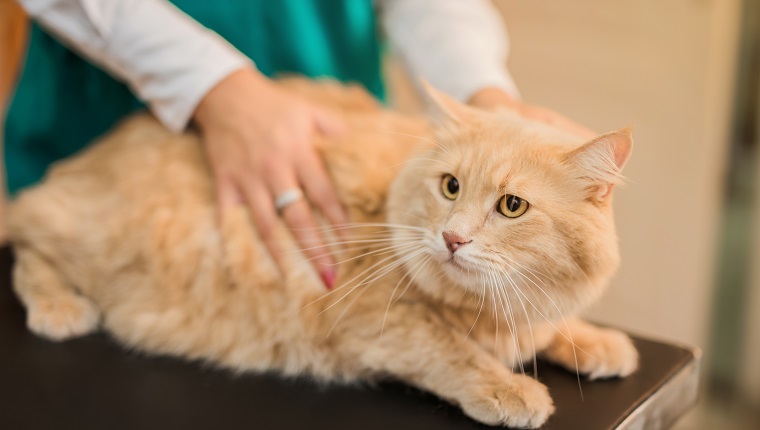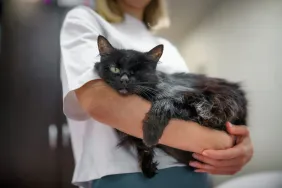Anal gland disease in cats occurs when the two anal sacs that are situated on either side of the anus become infected or blocked. The anal sacs contain an odorous fluid that is secreted whenever cats defecate or when they’re attempting to mark their territory.
Sometimes anal gland disease is also referred to as anal sac disease. If you see signs of this illness in your cat, then you must get to a veterinarian for a proper diagnosis and treatment.
Here’s what you should know about the symptoms, causes, and treatments for anal gland disease in cats.
Symptoms Of Anal Gland Disease In Cats
Anal gland disease in cats usually presents itself as a series of symptoms and issues concerning the anus and surrounding area.
Some of the most common symptoms include:
- Rubbing the affected area along the floor (known as scooting)
- Licking or even biting around the affected area
- Chasing their tail more than usual
- Swelling or redness around the anal area
In general, cats suffering from this disease can also become more aggressive in their day-to-day behavior.
Causes Of Anal Gland Disease In Cats

Anal gland disease in cats is usually caused by either an infection or impaction to the area.
In the case of infections, this happens when bacteria is allowed to build up in the anal sacs. If this isn’t treated quickly, the infection can even turn into an abscess.
Impaction is the term for what happens when the ducts of the anal sacs become clogged. Overweight felines are at a higher risk of suffering from impacted anal sacs.
Treatments For Anal Gland Disease In Cats
If your vet suspects your cat is suffering from anal gland disease, they’ll carry out a full physical exam, paying close attention to the anal area. They may consider testing a sample of your cat’s feces; although, most cases are diagnosed by physical examination.
If your cat’s condition is caused by impaction, the vet will squeeze out the contents of the anal sacs by hand. In some cases, they may carry this out after giving your cat an anesthetic.
If the disease is caused by an infection, the vet will also provide a course of antibiotics. As ever, when your vet prescribes antibiotics, make sure to follow the dosage instructions and complete the entire course.
In both cases, the vet will usually put your cat on painkillers as they recover.
Has your cat ever suffered from anal gland disease? What advice did your vet give you to help your kitty recover? Let us know in the comments section below!









